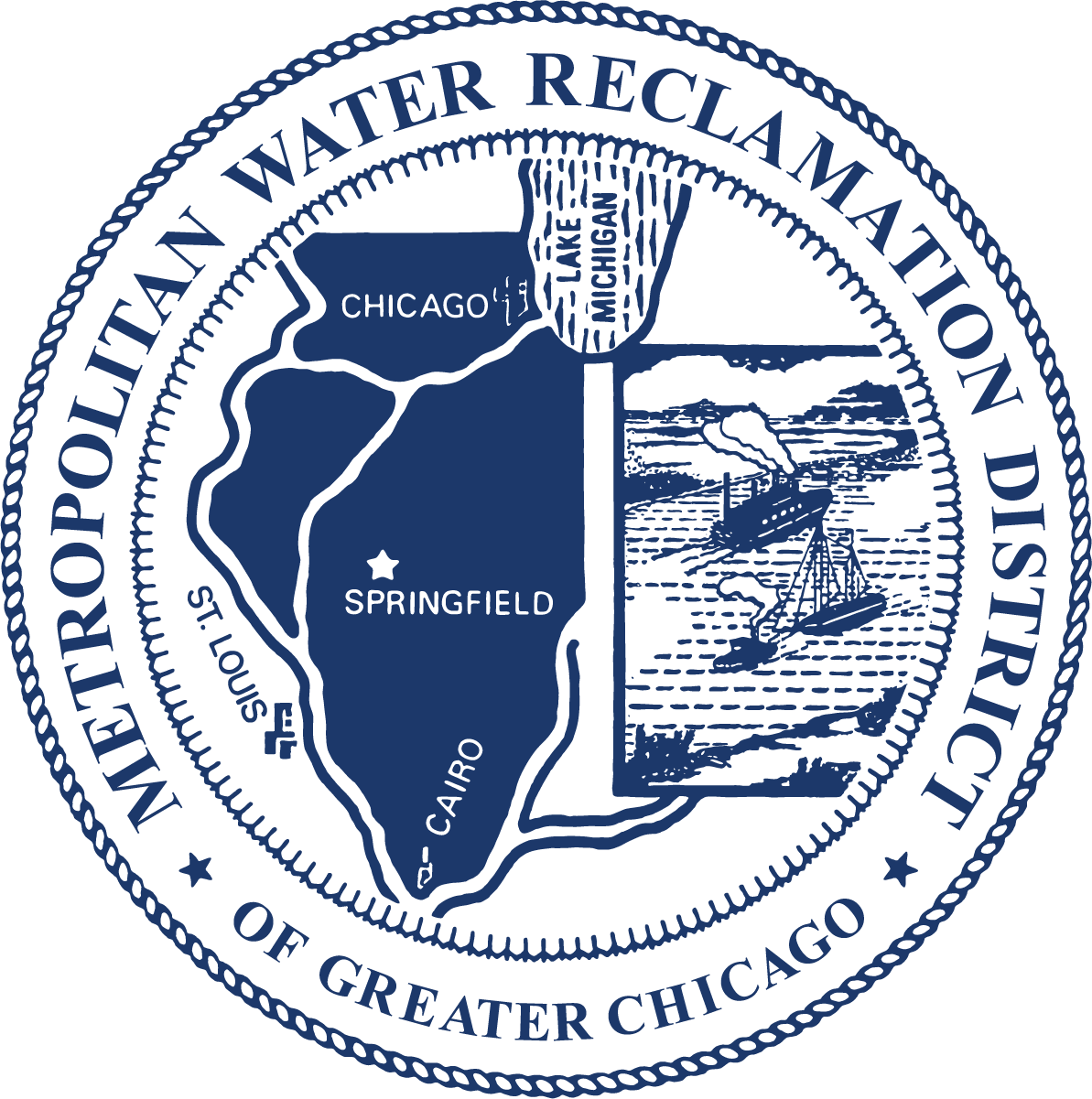Officials mark 125th anniversary of Chicago Sanitary and Ship Canal with new initiative to rename critical waterway
Breadcrumb
MWRD, U.S. Rep. Bill Foster, regional leaders, and Friends of the Chicago River celebrate the canal that saved Chicago and reveal new names for public vote

The Metropolitan Water Reclamation District of Greater Chicago (MWRD), Friends of the Chicago River, U.S. Rep. Bill Foster (IL-11), and an esteemed group of civic leaders and elected officials marked the 125th anniversary of the opening of the Chicago Sanitary and Ship Canal and unveiled the Redefining Chicago Sanitary and Ship Canal campaign. The initiative is working to change how people understand and view the canal starting with a public vote on preferences of new names for the 28-mile waterway that reflects a modern identity and bright future.
At a news conference held at Richard J. Daley Park on Chicago’s Southwest Side on October 24, officials honored the canal's pivotal role in protecting public health, as well as driving the region’s economy and its growing ecological and cultural importance while acknowledging the impact 19th century canal development had on Native Americans. Considered an engineering marvel that reversed the flow of the Chicago River and transformed the city’s destiny, water from the Chicago River officially flowed into the canal for the first time in January 1900. Watch the ceremony.
“The Chicago Sanitary and Ship Canal is one of the most significant engineering feats in American history,” said Kari K. Steele, president of the MWRD Board of Commissioners. “It literally changed the direction of a river to save lives. Today, it continues to serve the public by supporting regional commerce and fostering vibrant ecosystems.”
Once considered a gritty industrial channel, the Sanitary and Ship Canal is becoming a corridor teeming with wildlife, community, culture and economic opportunity. The reversal of the Chicago River in 1900 solved a public health crisis and set the foundation of the canal as a critical part of the nation’s shipping network. Thanks to decades of environmental investment and innovation, the waterway supports commerce, wildlife and community connection. The canal corridor, home to important industry, is also home to green spaces, restored habitats, trail systems and revitalized riverfronts. It continues to support vital commercial navigation, linking the Great Lakes to the Mississippi River.
The anniversary celebration brought together a broad coalition of leaders from Cook, DuPage, and Will Counties; local mayors; Chicago Park District leadership, and other organizations.

“We’re not just celebrating a historic milestone, we’re embracing a new era,” said Congressman Bill Foster (IL-11). “The canal is no longer about sanitation—it’s about continued growth as a vital shipping corridor, ecological health, vibrant communities, and resilient infrastructure. A new name will help carry us forward in the next 125 years, reflecting the region’s transformation and inspiring even greater progress.”
Due to the advent of wastewater treatment technology introduced in the 1920s by the MWRD and the MWRD’s Tunnel and Reservoir Plan (TARP) adopted in 1972, water quality has improved to a standard not once envisioned when the canal was originally named. The TARP system, also known as the “Deep Tunnel,” can capture and store 11 billion gallons of combined stormwater and sewage that used to overflow from sewers into the waterways. Because of this work, advocacy and collaboration among partners and leaders, the canal is an environmental and economic asset which will continue to grow in value for generations.
“The Chicago Sanitary and Ship Canal is a vital part of our village,” said Lemont Mayor John Egofske. “It is inextricably linked with our history as a canal community and our future, one that celebrates our industrial heritage while embracing expanding investment in our downtown historic district, role as a recreational gateway, and wonderful place for families and businesses.”
A committee formed earlier this year—made up of historians, conservationists, tribal representatives, artists, business and civic leaders—conducted a widespread public outreach campaign with a survey and community outreach to help shape a shortlist of new names. The naming committee followed best practices and whittled the name down, taking into account indigenous cultural considerations and perspectives.



“One of the defining elements of the Redefining campaign which seeks to connect community interests, ecological improvements and economic opportunity, is renaming the canal,” said Margaret Frisbie, executive director of Friends of the Chicago River. “Fish, turtles, herons and river otters call the canal home, and more people are asking for access to its banks. Renaming it is a powerful symbol of how far the canal has come in 125 years and what it can be.”
The options include:
- Chicago Portage Canal
- Chicago Shipping Canal
- Chicago-Lockport Canal
- Illinois Prairie Canal
- Southwest Canal
- Keep Chicago Sanitary and Ship Canal
How to vote: To find out more about the Redefining the Chicago Sanitary and Ship Canal campaign and vote, visit boldpastbrightfuture.org and click on the voting tab at the top. Voting runs until Nov. 7, and the winner will be announced on Monday, Nov. 24. To find out which name wins, participants are invited to sign up for Friends of the Chicago River’s electronic newsletter at chicagoriver.org. To sign up for news from the MWRD, visit mwrd.org/form/join-our-email-list.
The final name selection will be submitted to the U.S. Board on Geographic Names for approval.
About the Coalition
Support for redefining the Chicago Sanitary and Ship Canal comes from a broad coalition of nonprofits, governments, elected officials, businesses, and engaged citizens with a shared goal of celebrating the rich cultural and industrial history of the Chicago Sanitary and Ship Canal and modernizing its name to reflect where we have come from and where we are going. Founding members of the Coalition include Congressman Bill Foster (IL-11), Lemont Mayor Steve Egofske, Lockport Mayor Steve Streit, Summit Mayor Sergio Rodriguez, the Forest Preserves of Cook County, Illinois Department of Natural Resources, Friends of the Chicago River, and the MWRD. This diverse group is committed to working together to improve the canal corridor in support of human, ecological, and economic health.
